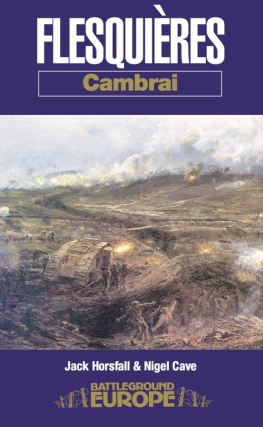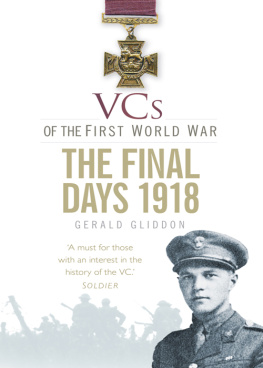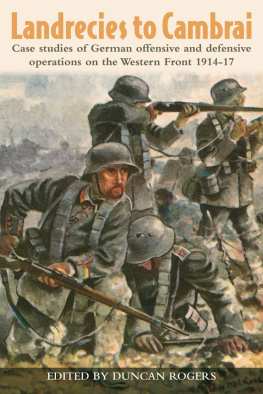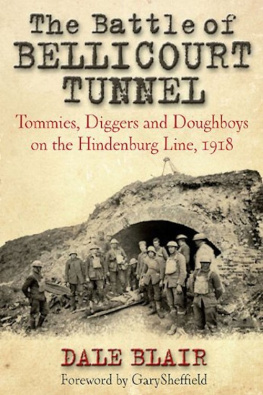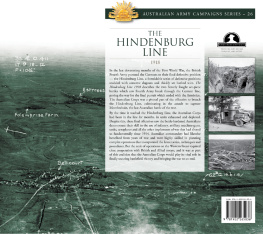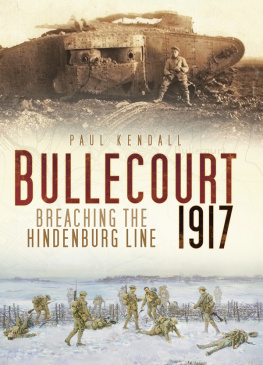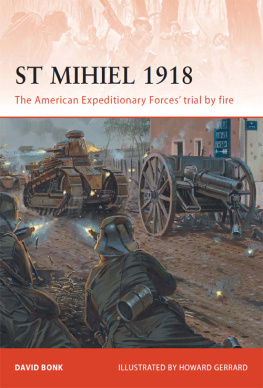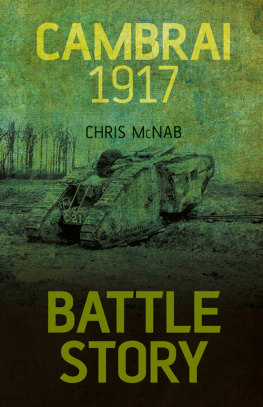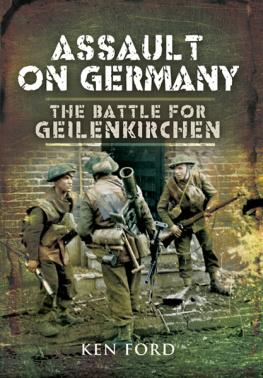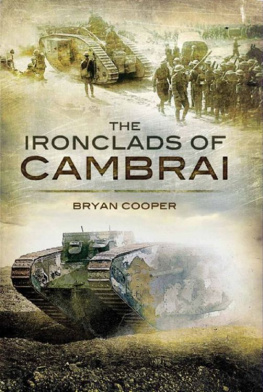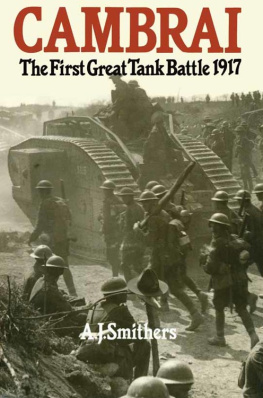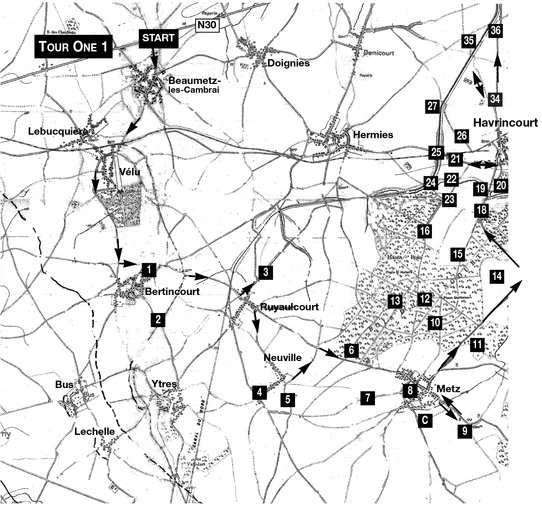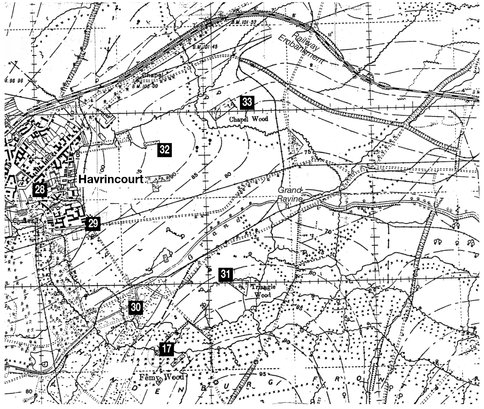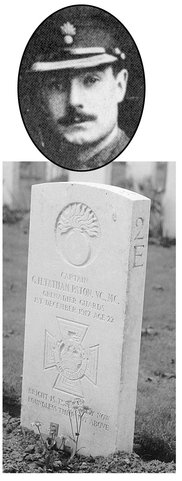Firstly I must thank Nigel Cave, who suggested that I should have a look at Flesquires and write its story; he then turned my labours into a readable volume. Monsieur Philippe Gorczynski of Cambrai and Jean-Luc Gibot of Gouzeaucourt, both researchers and writers on the First World War, provided indispensable assistance; particularly helpful was their book, Following the Tanks at Cambrai , a beautifully produced, mapped, researched and illustrated book. The photographs of then in this book are mainly from their photographic library.
I would like to thank many of the Regimental Museums and their curators for their assistance, in particular Kate Thaxton for the wealth of information about the Royal Norfolk Regiment.
My grateful thanks go once again to the Commonwealth War Graves Commission, Maidenhead, which unfailingly provided registers of the Commonwealth War Cemeteries, so essential for the Tours Section of this book.
I owe much to the valiant Wilkinson family at Pen & Sword, who really do all the hard work in putting my books together.
My thanks, of course, to the many French villagers who allowed me onto their land and willingly gave me all the information about events on their land in the time of their grandparents that they could.
Last, but far from least, I thank my wife, Mauveen, who abandoned the dining room and the small bedroom to all the documents, war diaries, computer print outs, etc. for seven months; and who accompanied me, once again, in the cold month of March, to test the battlefield tours. She has said, Im not going again, for the last twenty-five years; but still she comes.
TOUR ONE
The tour covers the arrival of the tanks and the 62nd (West Riding) Division to the battle area at Havrincourt Wood and its successful attack on the western end of the Flesquires Ridge and north to Graincourt.
Battle Maps: 4,5, 7, 8, 9, 10, 11, 12.
Tour circuit distance: Approx 15 miles .
Assuming that you have stayed at Cambrai, drive down the N30 for about 11 miles, proceeding through Fontaine-Notre-Dame. Please note that there are numerous priorities from the right in Fontaine, even from the most minor of roads. Suitable caution (and speed) MUST be adopte d. Passing Bourlon Wood on the right until, about two miles further on, you will see a turning to your left, the D18E to Beaumetz-les-Cambrai; take it. You will be coming this way again, visiting some of the places you are now passing, on subsequent tours, for this is the edge of the arc west of Flesquires.
You go past the village of Lebucquire on your right and skirting Vlu Wood on the left, within a mile you arrive at a minor road junction on the northern edge of Bertincourt. Turn left round the edge of the village, following the minor road round to the north-east corner, and Chateau Cemetery (1) .
The village was prominent in the battles of 1917 and 1918. It was also the base of a German Air Force Fighter Squadron in 1916 and later in the war the Red Baron, Manfred von Richtofen, flew from here. There were a number of airfields in the surrounding villages.
The British fought here twice and the 47 graves (with only two unknown) tells the tale, graves mainly from the 37th Division, the 7th KOYLIs, in March 1917 as they pursued the Germans back to the Hindenburg Line and, doing the same thing a year and a half later, the 42nd (East Lancashire) Division in 1918. My father, from Burnley, served with the latter in this area twice. A then prominent cotton manufacturer from the town owner has a son buried in row B Grave 16, Second Lieutenant JE Kippax, aged 20, killed on 20 September 1918. The 1/7th Lancashire Fusiliers lost Major RH Cade, aged 27, on the 27th of the same month. Though the cemetery is small it has a lot of memories for Lancashire men.
The tour follows the D7, going left out of the village to Ruyaulcourt. Before doing so note a track from the cemetery leading to (2) and down there, about a mile away, is where G Battalion of the Tank Corps unloaded from the train bringing them forward for the battle on 20 November 1917. However, turn left, following the curving road to the right and within a short distance is the line of the old railway track running down to (2) . Just before you enter Ruyaulcourt there is a CWGC sign indicating Ruyaulcourt Military Cemetery (3) to the left, along a narrow sunken track after about 500 yards along it. It is better to leave your car at the beginning of this track and the walk is well worth it. This sunken lane was the location of some of the British artillery in both 1917 and 1918. The cemetery holds 348 graves, with only 10 unknown. There are 86 men from the 42nd (East Lancashire) Division, mainly from the spring of 1917, casualties from forcing the Germans back to the Siegried Stellung. In row F Grave 8, over on the left hand side, is Lieutenant Colonel TAD Best DSO, killed when commanding the 2/5th Duke of Wellingtons going through Havrincourt. Next to him, killed at the same time, is Lieutenant JG Bodker. Close to him, in Grave 15, is Lieutenant The Hon. AM Kinnaird MC, who was mortally wounded on 26 November 1917 at Fontaine-Notre-Dame but rescued by Sergeant John McAuley of the Scots Guards who was awarded the Victoria Cross for this action. There is a friend of my father in row E Grave 11, Driver Albert Gregory of B/210(Burnley) Battery, killed on 14 July 1917 and there are others from the same Territorial Artillery Brigade who had also served on Gallipoli in 1915. There is a 19 year old machine gunner in row N Grave 7, Jack Turnbull, killed on 27 September 1918, whose parents named their home, on Kilmarnock Road, Glasgow, Ruyaulcourt, in his memory.
Drive into the village, turn left at the crossroads and then take the right fork for Neuville-Bourjonval (4) . It was here that Major General Braithwaite, commanding the 62nd (West Riding) Division, had his headquarters and whence the division set out for battle. In the village head south for Neuville-Bourjonval Military Cemetery (5) . It is on the right, 100 yards down a muddy track. Originally, at the communal cemetery, there was a large German cemetery (528 men) but the bodies were all removed after the war. The British cemetery holds 198 graves (nine unknown). 48 are of the 42nd (East Lancashire) Division from their time at the Hindenburg Line and Trescault in the spring of 1917. Many others are of men from the Rifle Brigade, killed during the same period, in fact the ridge immediately east of here was called Green Jacket Ridge. Of course there are men here killed in the Cambrai battle and the holding of the Flesquires Salient. In row E Grave 28 is Lieutenant Colonel Herbert St Hill, aged 52, of the Royal North Devon Hussars in which he served for eighteen years. He had fought in the Matabele, Angoni, South Africa and Gallipoli campaigns, where he had commanded the 6th Lincolns.
Captain George Henry Tatham Paton VC, MC
Retrace your route to the village, turn right and right again onto the D7 and at (6) is the corner of Havrincourt Wood where G Battalion of the Tank Corps gathered for the attack, leading the 62nd Division into it. They moved towards the front line in the north, the battle maps indicating the layout then. The tanks went up the left hand side of the wood to enter the attack line 2,000 yards away. It is possible to walk in the wood but note that the wood is private property. Nearby and almost opposite the woods corner, on the right hand side of the road (7) , was the HQ of 153 Brigade Royal Field Artillery. Some of its men are buried in the cemeteries already visited. We will be coming along this road on later tours.

